MARKETING
Is Your Content The Right Fit For Your Audience? Learn About Context Marketing And How to Apply it

Successful businesses know their consumers are constantly evolving. The modern consumer is selective when they consume media. They don’t appreciate top-down marketing strategies anymore. Rather, they want businesses to cater their content according to their needs and not the other way round.
Context marketing is an excellent solution for any brand that wants to up its advertising game. It’s a consumer-centric approach that involves pushing relevant content to your target audience based on what they’re doing at that moment. The ultimate goal is to ‘catch’ your consumers when they’re engaging in an activity that is related to your brand.
For example, a woman is searching for an easy recipe on YouTube to make lunch for her children. She clicks on the video she wants to watch and a pre-roll runs before she can access her content. The pre-roll is advertising a bento/lunchbox brand. The woman finds this to be useful and clicks on the provided link to purchase bento boxes for her children. This would be a context marketing win.

Context Vs Content Marketing: The Guide
Brands that regularly advertise know all about content marketing but here’s a quick recap just in case.
Content marketing is all about content creation and sharing. You can create multiple forms of digital content pieces, including but not limited to short and long-form videos, static graphics, 2D/3D animations, blog posts, and 360 videos. This content is intended to generate interest in a brand but doesn’t specifically use consumer preferences as insights.
Context marketing is different because it uses data-driven insights to target your consumers at the most relevant times. Brands can select from a variety of options to create a contextual campaign that makes consumers pay attention because it promotes something they need at any given moment.
For example, if you were advertising a call masking app using a content marketing strategy, you would create a bunch of posts promoting the app. You’d post these on your social media and use media spends to advertise it to a general audience. This strategy might work, but it won’t get you the ROI you need.
Alternatively, you could use a context marketing strategy and place ads for the app in YouTube videos involving pranks. You could also use Google AdSense and have your ads pop up when people search for privacy concerns when making phone calls. This strategy would ensure you hit your marketing KPIs and would be much more efficient.
Why Does Context Marketing Work?
It’s a good time to segue into the whys of context marketing. Why should your brand adopt a context marketing strategy? What’s in it for you? These are great questions to ask and the answers will reassure you.

Here’s why context marketing works for advertisers:
Context Converts
The key to getting crazy conversions is to study your consumers’ journey. Traditional marketing focused on a funnel approach, where the brand would guide the consumer towards purchase. Context marketing asks you to consider the consumers’ needs before pushing content to them. Adopting this strategy leads to better content performance and an impressive conversion rate.
Context is Affordable
Brands can get efficient results that are lighter on the pocket than a content-based approach. There’s no need to create endless campaigns to sell your product or services. You can use one or two key content pieces, target them to pop up at the right time, and enjoy successful results.
Context is Retained
All brands want to break through clutter. In an over-saturated digital space, thumb-stopping power is king. Context marketing allows brands to increase both Top of Mind (TOM) and recall because it creates brand equity, i.e. provides consumers with branded yet impactful experiences. These make them less likely to forget about the brand.
How to do Context Marketing the Right Way
Context marketing should be your go-to strategy across the various touchpoints in your marketing plan. The approach applies to ideation, comms, and even your brand’s digital eCommerce strategy. We will discuss implementation in greater detail below.
An efficient context marketing strategy simultaneously identifies and solves consumers’ problems or pain points. Brands shouldn’t be worried about getting eyes on their products. They should be more concerned about solving key issues that their consumers have, to increase their customer base and win loyalty over time.

Interested in becoming a Content Marketing Professional? Get our Content Marketing Mastery Certification and become an expert. Click here
Special 4th of July Promo Specials:
Certification: $95
Content Pro Bundle: $593
Keeping this in mind, these are some of the points to consider when formulating your brand’s context marketing strategy:

1. Use Popular Platforms to Craft Experiences
According to Statista, approximately 6.648 billion people own smartphones around the world. This is a staggering number because it accounts for almost 83.72% of the global population. Any successful brand knows they have to be where their consumers are, which is to say on smartphones.
Brands can utilize context marketing to create relevant experiences for consumers right on their cellphones. An efficient and uncomplicated way to do this is to follow PUBG’s example.
The mobile game collaborated with K-Pop girl group BLACKPINK last year to create a set of in-game billboards, electronic displays, and custom outfits for playable characters. With K-Pop on the rise, BLACKPINK placed themselves in a relevant space and targeted gaming consumers so they would create a positive association around both the brand and the band.
Context marketing through mobile phones is also possible through geotargeting. Dominos ran a successful campaign where they pushed offers and deals to consumers based on their exact location. This was all done in real-time; consumers got texts urging them to order Dominos with a unique discount for their area. The campaign was a major win and resulted in a high conversion rate for Dominos.
This model can be replicated: imagine efficiently reaching consumers through texts or voicemail at the time they need it most. Their brand love would increase exponentially.

2. Place CTAs in Effective Spaces
All branded content being pushed in online spaces should include a Call To Action (CTA). Context marketing works when a potential consumer sees your advert in a space where it’s hyper-relevant.
For example, if an employer is browsing online about “remote culture”, they would be open to seeing an advertising blog about remote work. A strong CTA like “Visit Here!” might give them the extra push they need to open your webpage.
3. Create Spaces for Social Sharing
Virality can make or break brands in this digital age. Brands can amp up their shareability with a focused context marketing strategy. A good example to follow is to look at what Buzzfeed does.
Buzzfeed is a content giant and it works solely on the principle of social sharing. If your friend enjoys an article or quiz made from Outgrow Quiz Maker, they will send you the link. You will engage with the content piece, earning Buzzfeed revenue, and you might share it forward, too. Buzzfeed engineers this process by customizing the sharing buttons on the bottom of its web pages.
So, based on a consumer’s online habits, the article they see will have specific buttons for the social media sites they visit most. Frequent Instagrammers will see the Gram button first in order, whereas Twitter users will see the blue bird. This is a smart way to contextualize your content since it places the audience in the top spot.
Brands can also incentivize social sharing and/or engagement. For example, everyone knows how to rate an app but not everyone wants to do it. Your brand can offer a small incentive such as a discount coupon or a BOGO offer to get consumers to rate your app. It seems like a small gesture but this kind of context marketing can increase retention and build a positive association around the brand for the audience.

Bonus: Contextualize your Marketing with Facebook
It’s worthwhile to note that Facebook is an important platform for brands looking to deploy context marketing. Numerous Facebook groups cater to almost every niche you can think of. Some of these groups also allow brands to covertly advertise their products or services cleverly.
For example, an FMCG brand can offer a month’s or year’s worth of goods to users that engage with its digital campaign in the group. Consumers love when brands engage with them in a personal space as long as they’re not obnoxious about it and Facebook groups are a good way to do that.
Facebook also makes it possible to target ads based on what users have liked or engaged with. If you like a page about rock climbing, for example, you’re likely to start seeing adverts from brands selling safety gear or sports apparel. This makes it possible for brands to pull in new customers from a specific pool, meaning they increase their TOM for their audience.
Whether you leverage Facebook or Google to contextualize your adverts, the point of note is that context marketing works. It delivers results backed by data, allows for reduction in marketing spends and content budgets, and enables businesses to build brand equity through relevant and impactful consumer experiences.
MARKETING
Ecommerce evolution: Blurring the lines between B2B and B2C
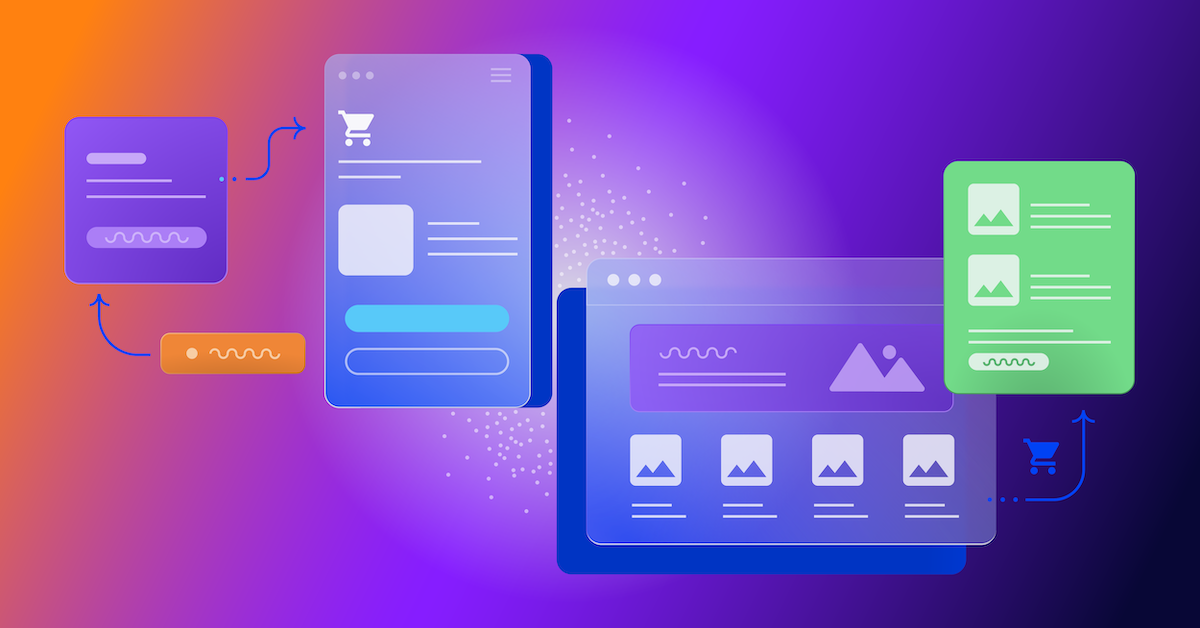
Understanding convergence
B2B and B2C ecommerce are two distinct models of online selling. B2B ecommerce is between businesses, such as wholesalers, distributors, and manufacturers. B2C ecommerce refers to transactions between businesses like retailers and consumer brands, directly to individual shoppers.
However, in recent years, the boundaries between these two models have started to fade. This is known as the convergence between B2B and B2C ecommerce and how they are becoming more similar and integrated.
Source: White Paper: The evolution of the B2B Consumer Buyer (ClientPoint, Jan 2024)
What’s driving this change?
Ever increasing customer expectations
Customers today expect the same level of convenience, speed, and personalization in their B2B transactions as they do in their B2C interactions. B2B buyers are increasingly influenced by their B2C experiences. They want research, compare, and purchase products online, seamlessly transitioning between devices and channels. They also prefer to research and purchase online, using multiple devices and channels.
Forrester, 68% of buyers prefer to research on their own, online . Customers today expect the same level of convenience, speed, and personalization in their B2B transactions as they do in their B2C interactions. B2B buyers are increasingly influenced by their B2C experiences. They want research, compare, and purchase products online, seamlessly transitioning between devices and channels. They also prefer to research and purchase online, using multiple devices and channels
Technology and omnichannel strategies
Technology enables B2B and B2C ecommerce platforms to offer more features and functionalities, such as mobile optimization, chatbots, AI, and augmented reality. Omnichannel strategies allow B2B and B2C ecommerce businesses to provide a seamless and consistent customer experience across different touchpoints, such as websites, social media, email, and physical stores.
However, with every great leap forward comes its own set of challenges. The convergence of B2B and B2C markets means increased competition. Businesses now not only have to compete with their traditional rivals, but also with new entrants and disruptors from different sectors. For example, Amazon Business, a B2B ecommerce platform, has become a major threat to many B2B ecommerce businesses, as it offers a wide range of products, low prices, and fast delivery
“Amazon Business has proven that B2B ecommerce can leverage popular B2C-like functionality” argues Joe Albrecht, CEO / Managing Partner, Xngage. . With features like Subscribe-and-Save (auto-replenishment), one-click buying, and curated assortments by job role or work location, they make it easy for B2B buyers to go to their website and never leave. Plus, with exceptional customer service and promotional incentives like Amazon Business Prime Days, they have created a reinforcing loyalty loop.
And yet, according to Barron’s, Amazon Business is only expected to capture 1.5% of the $5.7 Trillion addressable business market by 2025. If other B2B companies can truly become digital-first organizations, they can compete and win in this fragmented space, too.”
If other B2B companies can truly become digital-first organizations, they can also compete and win in this fragmented space
Joe AlbrechtCEO/Managing Partner, XNGAGE
Increasing complexity
Another challenge is the increased complexity and cost of managing a converging ecommerce business. Businesses have to deal with different customer segments, requirements, and expectations, which may require different strategies, processes, and systems. For instance, B2B ecommerce businesses may have to handle more complex transactions, such as bulk orders, contract negotiations, and invoicing, while B2C ecommerce businesses may have to handle more customer service, returns, and loyalty programs. Moreover, B2B and B2C ecommerce businesses must invest in technology and infrastructure to support their convergence efforts, which may increase their operational and maintenance costs.
How to win
Here are a few ways companies can get ahead of the game:
Adopt B2C-like features in B2B platforms
User-friendly design, easy navigation, product reviews, personalization, recommendations, and ratings can help B2B ecommerce businesses to attract and retain more customers, as well as to increase their conversion and retention rates.
According to McKinsey, ecommerce businesses that offer B2C-like features like personalization can increase their revenues by 15% and reduce their costs by 20%. You can do this through personalization of your website with tools like Product Recommendations that help suggest related products to increase sales.
Focus on personalization and customer experience
B2B and B2C ecommerce businesses need to understand their customers’ needs, preferences, and behaviors, and tailor their offerings and interactions accordingly. Personalization and customer experience can help B2B and B2C ecommerce businesses to increase customer satisfaction, loyalty, and advocacy, as well as to improve their brand reputation and competitive advantage. According to a Salesforce report, 88% of customers say that the experience a company provides is as important as its products or services.
Market based on customer insights
Data and analytics can help B2B and B2C ecommerce businesses to gain insights into their customers, markets, competitors, and performance, and to optimize their strategies and operations accordingly. Data and analytics can also help B2B and B2C ecommerce businesses to identify new opportunities, trends, and innovations, and to anticipate and respond to customer needs and expectations. According to McKinsey, data-driven organizations are 23 times more likely to acquire customers, six times more likely to retain customers, and 19 times more likely to be profitable.
What’s next?
The convergence of B2B and B2C ecommerce is not a temporary phenomenon, but a long-term trend that will continue to shape the future of ecommerce. According to Statista, the global B2B ecommerce market is expected to reach $20.9 trillion by 2027, surpassing the B2C ecommerce market, which is expected to reach $10.5 trillion by 2027. Moreover, the report predicts that the convergence of B2B and B2C ecommerce will create new business models, such as B2B2C, B2A (business to anyone), and C2B (consumer to business).
Therefore, B2B and B2C ecommerce businesses need to prepare for the converging ecommerce landscape and take advantage of the opportunities and challenges it presents. Here are some recommendations for B2B and B2C ecommerce businesses to navigate the converging landscape:
- Conduct a thorough analysis of your customers, competitors, and market, and identify the gaps and opportunities for convergence.
- Develop a clear vision and strategy for convergence, and align your goals, objectives, and metrics with it.
- Invest in technology and infrastructure that can support your convergence efforts, such as cloud, mobile, AI, and omnichannel platforms.
- Implement B2C-like features in your B2B platforms, and vice versa, to enhance your customer experience and satisfaction.
- Personalize your offerings and interactions with your customers, and provide them with relevant and valuable content and solutions.
- Leverage data and analytics to optimize your performance and decision making, and to innovate and differentiate your business.
- Collaborate and partner with other B2B and B2C ecommerce businesses, as well as with other stakeholders, such as suppliers, distributors, and customers, to create value and synergy.
- Monitor and evaluate your convergence efforts, and adapt and improve them as needed.
By following these recommendations, B2B and B2C ecommerce businesses can bridge the gap between their models and create a more integrated and seamless ecommerce experience for their customers and themselves.
MARKETING
Streamlining Processes for Increased Efficiency and Results

How can businesses succeed nowadays when technology rules? With competition getting tougher and customers changing their preferences often, it’s a challenge. But using marketing automation can help make things easier and get better results. And in the future, it’s going to be even more important for all kinds of businesses.
So, let’s discuss how businesses can leverage marketing automation to stay ahead and thrive.
Benefits of automation marketing automation to boost your efforts
First, let’s explore the benefits of marketing automation to supercharge your efforts:
Marketing automation simplifies repetitive tasks, saving time and effort.
With automated workflows, processes become more efficient, leading to better productivity. For instance, automation not only streamlines tasks like email campaigns but also optimizes website speed, ensuring a seamless user experience. A faster website not only enhances customer satisfaction but also positively impacts search engine rankings, driving more organic traffic and ultimately boosting conversions.
Automation allows for precise targeting, reaching the right audience with personalized messages.
With automated workflows, processes become more efficient, leading to better productivity. A great example of automated workflow is Pipedrive & WhatsApp Integration in which an automated welcome message pops up on their WhatsApp
within seconds once a potential customer expresses interest in your business.
Increases ROI
By optimizing campaigns and reducing manual labor, automation can significantly improve return on investment.
Leveraging automation enables businesses to scale their marketing efforts effectively, driving growth and success. Additionally, incorporating lead scoring into automated marketing processes can streamline the identification of high-potential prospects, further optimizing resource allocation and maximizing conversion rates.
Harnessing the power of marketing automation can revolutionize your marketing strategy, leading to increased efficiency, higher returns, and sustainable growth in today’s competitive market. So, why wait? Start automating your marketing efforts today and propel your business to new heights, moreover if you have just learned ways on how to create an online business
How marketing automation can simplify operations and increase efficiency
Understanding the Change
Marketing automation has evolved significantly over time, from basic email marketing campaigns to sophisticated platforms that can manage entire marketing strategies. This progress has been fueled by advances in technology, particularly artificial intelligence (AI) and machine learning, making automation smarter and more adaptable.
One of the main reasons for this shift is the vast amount of data available to marketers today. From understanding customer demographics to analyzing behavior, the sheer volume of data is staggering. Marketing automation platforms use this data to create highly personalized and targeted campaigns, allowing businesses to connect with their audience on a deeper level.
The Emergence of AI-Powered Automation
In the future, AI-powered automation will play an even bigger role in marketing strategies. AI algorithms can analyze huge amounts of data in real-time, helping marketers identify trends, predict consumer behavior, and optimize campaigns as they go. This agility and responsiveness are crucial in today’s fast-moving digital world, where opportunities come and go in the blink of an eye. For example, we’re witnessing the rise of AI-based tools from AI website builders, to AI logo generators and even more, showing that we’re competing with time and efficiency.
Combining AI-powered automation with WordPress management services streamlines marketing efforts, enabling quick adaptation to changing trends and efficient management of online presence.
Moreover, AI can take care of routine tasks like content creation, scheduling, and testing, giving marketers more time to focus on strategic activities. By automating these repetitive tasks, businesses can work more efficiently, leading to better outcomes. AI can create social media ads tailored to specific demographics and preferences, ensuring that the content resonates with the target audience. With the help of an AI ad maker tool, businesses can efficiently produce high-quality advertisements that drive engagement and conversions across various social media platforms.
Personalization on a Large Scale
Personalization has always been important in marketing, and automation is making it possible on a larger scale. By using AI and machine learning, marketers can create tailored experiences for each customer based on their preferences, behaviors, and past interactions with the brand.
This level of personalization not only boosts customer satisfaction but also increases engagement and loyalty. When consumers feel understood and valued, they are more likely to become loyal customers and brand advocates. As automation technology continues to evolve, we can expect personalization to become even more advanced, enabling businesses to forge deeper connections with their audience. As your company has tiny homes for sale California, personalized experiences will ensure each customer finds their perfect fit, fostering lasting connections.
Integration Across Channels
Another trend shaping the future of marketing automation is the integration of multiple channels into a cohesive strategy. Today’s consumers interact with brands across various touchpoints, from social media and email to websites and mobile apps. Marketing automation platforms that can seamlessly integrate these channels and deliver consistent messaging will have a competitive edge. When creating a comparison website it’s important to ensure that the platform effectively aggregates data from diverse sources and presents it in a user-friendly manner, empowering consumers to make informed decisions.
Omni-channel integration not only betters the customer experience but also provides marketers with a comprehensive view of the customer journey. By tracking interactions across channels, businesses can gain valuable insights into how consumers engage with their brand, allowing them to refine their marketing strategies for maximum impact. Lastly, integrating SEO services into omni-channel strategies boosts visibility and helps businesses better understand and engage with their customers across different platforms.
The Human Element
While automation offers many benefits, it’s crucial not to overlook the human aspect of marketing. Despite advances in AI and machine learning, there are still elements of marketing that require human creativity, empathy, and strategic thinking.
Successful marketing automation strikes a balance between technology and human expertise. By using automation to handle routine tasks and data analysis, marketers can focus on what they do best – storytelling, building relationships, and driving innovation.
Conclusion
The future of marketing automation looks promising, offering improved efficiency and results for businesses of all sizes.
As AI continues to advance and consumer expectations change, automation will play an increasingly vital role in keeping businesses competitive.
By embracing automation technologies, marketers can simplify processes, deliver more personalized experiences, and ultimately, achieve their business goals more effectively than ever before.
MARKETING
Will Google Buy HubSpot? | Content Marketing Institute
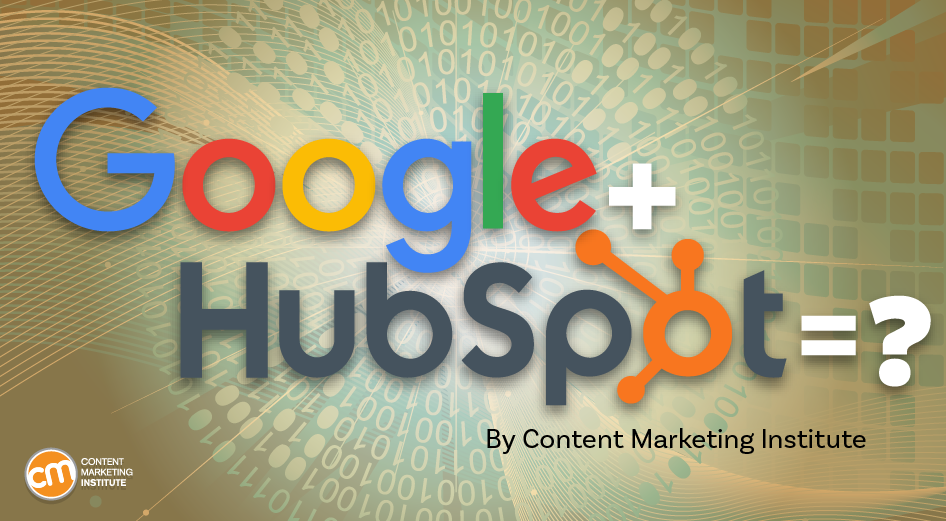
Google + HubSpot. Is it a thing?
This week, a flurry of news came down about Google’s consideration of purchasing HubSpot.
The prospect dismayed some. It delighted others.
But is it likely? Is it even possible? What would it mean for marketers? What does the consideration even mean for marketers?
Well, we asked CMI’s chief strategy advisor, Robert Rose, for his take. Watch this video or read on:
Why Alphabet may want HubSpot
Alphabet, the parent company of Google, apparently is contemplating the acquisition of inbound marketing giant HubSpot.
The potential price could be in the range of $30 billion to $40 billion. That would make Alphabet’s largest acquisition by far. The current deal holding that title happened in 2011 when it acquired Motorola Mobility for more than $12 billion. It later sold it to Lenovo for less than $3 billion.
If the HubSpot deal happens, it would not be in character with what the classic evil villain has been doing for the past 20 years.
At first glance, you might think the deal would make no sense. Why would Google want to spend three times as much as it’s ever spent to get into the inbound marketing — the CRM and marketing automation business?
At a second glance, it makes a ton of sense.
I don’t know if you’ve noticed, but I and others at CMI spend a lot of time discussing privacy, owned media, and the deprecation of the third-party cookie. I just talked about it two weeks ago. It’s really happening.
All that oxygen being sucked out of the ad tech space presents a compelling case that Alphabet should diversify from third-party data and classic surveillance-based marketing.
Yes, this potential acquisition is about data. HubSpot would give Alphabet the keys to the kingdom of 205,000 business customers — and their customers’ data that almost certainly numbers in the tens of millions. Alphabet would also gain access to the content, marketing, and sales information those customers consumed.
Conversely, the deal would provide an immediate tip of the spear for HubSpot clients to create more targeted programs in the Alphabet ecosystem and upload their data to drive even more personalized experiences on their own properties and connect them to the Google Workspace infrastructure.
When you add in the idea of Gemini, you can start to see how Google might monetize its generative AI tool beyond figuring out how to use it on ads on search results pages.
What acquisition could mean for HubSpot customers
I may be stretching here but imagine this world. As a Hubspoogle customer, you can access an interface that prioritizes your owned media data (e.g., your website, your e-commerce catalog, blog) when Google’s Gemini answers a question).
Recent reports also say Google may put up a paywall around the new premium features of its artificial intelligence-powered Search Generative Experience. Imagine this as the new gating for marketing. In other words, users can subscribe to Google’s AI for free, but Hubspoogle customers can access that data and use it to create targeted offers.
The acquisition of HubSpot would immediately make Google Workspace a more robust competitor to Microsoft 365 Office for small- and medium-sized businesses as they would receive the ADDED capability of inbound marketing.
But in the world of rented land where Google is the landlord, the government will take notice of the acquisition. But — and it’s a big but, I cannot lie (yes, I just did that). The big but is whether this acquisition dance can happen without going afoul of regulatory issues.
Some analysts say it should be no problem. Others say, “Yeah, it wouldn’t go.” Either way, would anybody touch it in an election year? That’s a whole other story.
What marketers should realize
So, what’s my takeaway?
It’s a remote chance that Google will jump on this hard, but stranger things have happened. It would be an exciting disruption in the market.
The sure bet is this. The acquisition conversation — as if you needed more data points — says getting good at owned media to attract and build audiences and using that first-party data to provide better communication and collaboration with your customers are a must.
It’s just a matter of time until Google makes a move. They might just be testing the waters now, but they will move here. But no matter what they do, if you have your customer data house in order, you’ll be primed for success.
HANDPICKED RELATED CONTENT:
Cover image by Joseph Kalinowski/Content Marketing Institute
-

 SEO6 days ago
SEO6 days agoGoogle Limits News Links In California Over Proposed ‘Link Tax’ Law
-
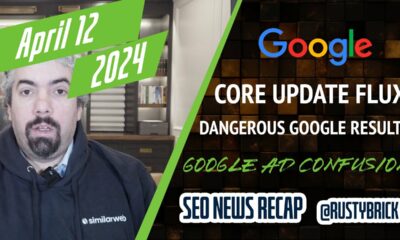
 SEARCHENGINES6 days ago
SEARCHENGINES6 days agoGoogle Core Update Volatility, Helpful Content Update Gone, Dangerous Google Search Results & Google Ads Confusion
-
SEARCHENGINES7 days ago
Daily Search Forum Recap: April 12, 2024
-
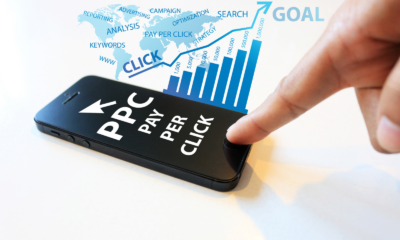
 SEO6 days ago
SEO6 days ago10 Paid Search & PPC Planning Best Practices
-

 MARKETING6 days ago
MARKETING6 days ago2 Ways to Take Back the Power in Your Business: Part 2
-

 MARKETING4 days ago
MARKETING4 days ago5 Psychological Tactics to Write Better Emails
-

 PPC6 days ago
PPC6 days agoCritical Display Error in Brand Safety Metrics On Twitter/X Corrected
-

 SEARCHENGINES5 days ago
SEARCHENGINES5 days agoWeekend Google Core Ranking Volatility




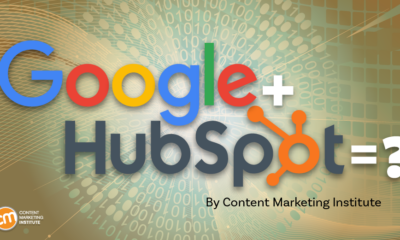







You must be logged in to post a comment Login